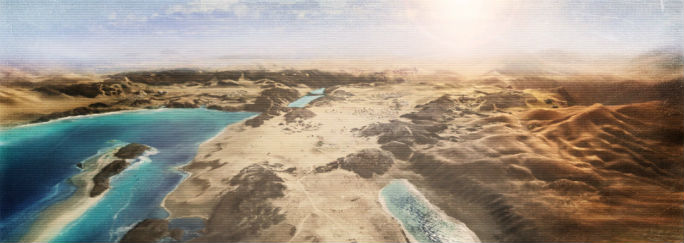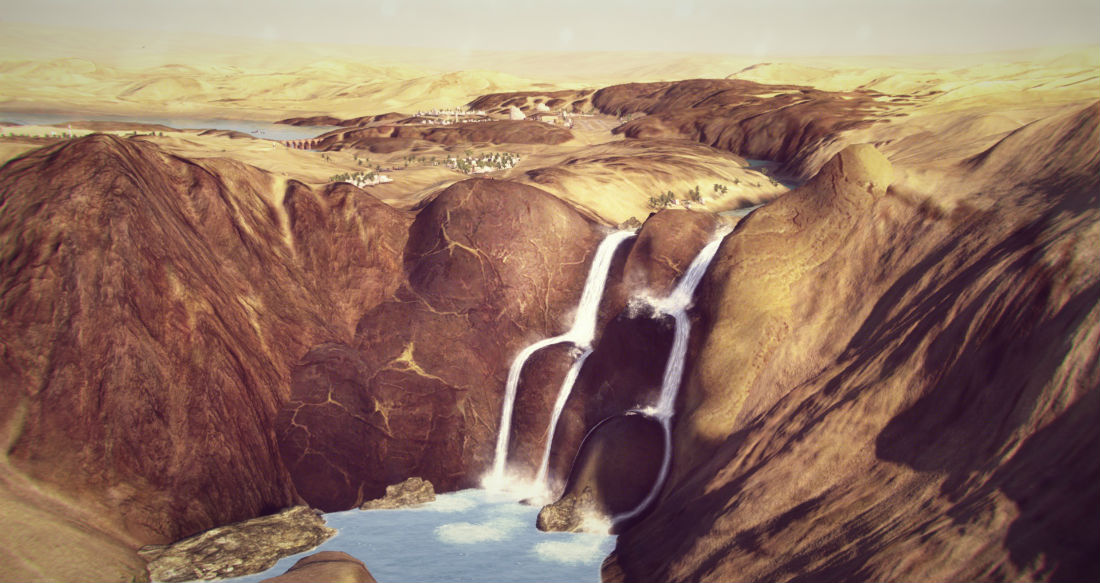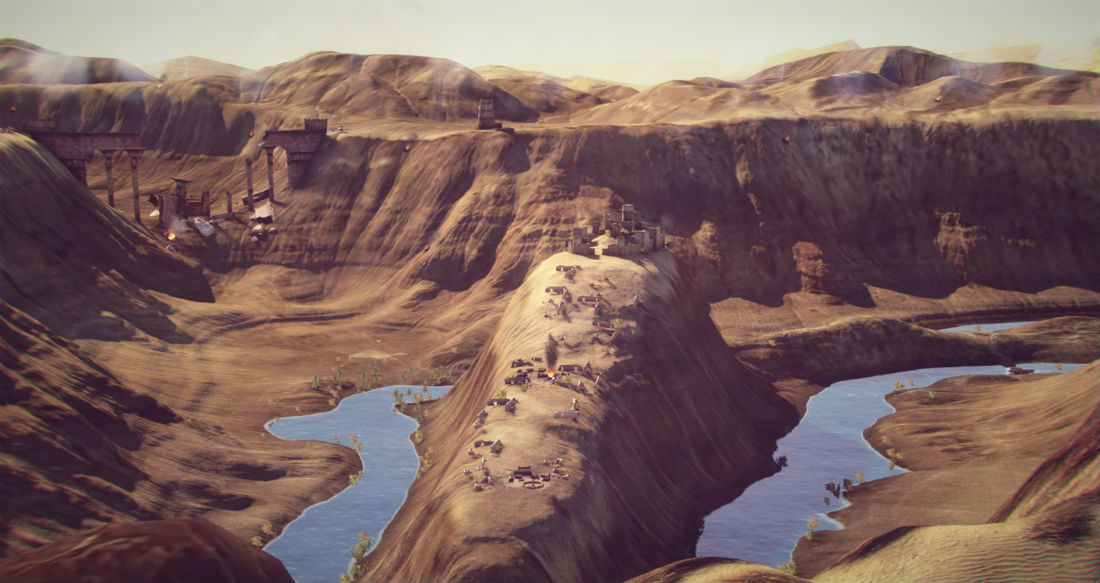-
![LANG-CODE-KEY]() LANG_NAME_KEY
LANG_NAME_KEY

Description: El Halluf offers an offensive in a desert region traversed with lakes and mountain rivers. The battle unfolds for an air base on the one side and a fuel depot on the other side. One team attempts to clear the enemy from the plateau and seize valuable fuel and support vehicles. The other team tries to drive the enemy out from the air base located near the waterfall.
|
“Old” El Halluf |
Stats |
“New” El Halluf |
|---|---|---|
|
|
Tiers: Type: Elevation: |
|
El Halluf is, along with Harbor, one of the oldest maps in World of Warplanes. World of Tanks players may recognise parts of its landscape from their own level in their game of the same name, which served as a model for the World of Warplanes counterpart.
The map has undergone some changes with the recent 1.6 update. Although it’s still meant for low-tier battles, our level designers felt that El Halluf was becoming a little too confined, which is why they’ve extended the battle area surface from around 110km2 to 144km2 by adding about 1.5km of space in every direction. While you likely won’t take much notice of this when flying on Tier I-III planes, the additional space comes in handy for faster Tier IV aircraft which occasionally play on the level as well.
As you can see from the map comparison above, the revamp allows you now to further explore the valley of the canyon river past the turning point that previously limited your advancement. This adds a new narrow and largely protected corridor, which can serve as a good hiding spot for escaping aircraft. Towards the south, the map extension now also puts the previously unattainable oasis in the desert (including its bordering acropolis at J9) within reach.
|
|
 |
 |
|
Collapsing bridges, crushing waterfalls and sweeping rivers – what’s not to love? |
||
What makes this map so fun is its convenient traversability. As one of the smallest maps in the game, El Halluf allows you to easily access all of its hotspots without having to fly for long periods of time. While this has changed somewhat because of the update, it still remains one of the strong suits of the map, which makes it an ideal playground for World of Warplanes newcomers.
Being a largely flat desert landscape, elevation on this map only really exists due to the crease in the terrain of the northern passage. It is there that steep walls give way to a 300m-high waterfall at E3 that further flows into a shallow canyon river. Nonetheless, you won’t do much climbing on this map so the altitude characteristics of your plane will be somewhat secondary.
One of the must-see sights of this map is a series of low bridges at G3-F2 that lead towards the prolonged mountain island following the curvature of the river around it. Some of you may have seen the spectacular crashes that sometimes occur here when daring pilots try to escape their pursuers by flying through the narrow spaces under these bridges. And speaking of spectacular, the collapse of the old aqueduct at C2 is also nothing short of amazing. Trigger it yourself by flying close to the bridge or watch it happen from a safe distance when other players get near it. Make sure you also don’t miss the burning wreckage of a crashed German bomber on the mountain hill at D4 which further adds to the map’s atmosphere.
|
|
|
|
|
El Halluf - Come for the sun, stay for the heat! |
||
In terms of the ground target layout, El Halluf offers a fairly standard approach. Both teams still spawn at their old spawning locations in opposing corners to the South-West and North-East. From there, it’s either towards the mountain river in the north or across the water basin in the south. When going south, depending on your side, you’ll encounter an armada of up to 10 small ships (with further individual vessels) on the water. The rest are fortifications leading to the northern base at D8 (if you spawn in the south) or the urban military settlement at H3 for the northern team. Prepare to encounter some hard-to-crack bunkers at both locations that require high-penetration weapons or bombs to break.
The northern route only has two fortifications each (D3 and C4), of which only one is armed – an easy but not very profitable route for Attack Aircraft. The southern route is way more attractive, albeit also more dangerous. Not only is the majority of all ground targets located in the lower arc of the map, the underlying lake is also the main collision point for all types of planes that frequently fight here. Anybody passing through this region will need to be prepared to take heat – both from the ground as well as from the skies. The more prudent thing to do would be to fly above ground along the far south or east side of the map and then make a sharp 90° turn to fly towards the upcoming enemy targets in one straight line. That way you have a better chance to slip past incoming defenders coming across the water and will be able to fly directly towards the enemy base without having to adjust your course.
 Worth the trip: the four mythical pyramids of El-Halluf.
Worth the trip: the four mythical pyramids of El-Halluf.
If you fly along the eastern map border looking north, you’ll be able to spot four pyramids peeking out of the eternal sea of dunes in the distance. It is here that our level designers often place different backgrounds such as giant robots that were spotted here during our April Fool’s special this year.
Will you be able to stand the heat of the desert, pilots?